I think at one time or another, we have all felt as though we were born into the wrong age. That maybe we should have or could have lived during medieval times or even in the future. For me, I think it was the 1930’s and 40’s. Since I was a wee lad I have had a harsh affection for World War II era planes, ships, tanks, whatever. Maybe it was too much G.I.Joe or those little plastic army men, who knows. All I know, is if it was part of WWII, I like it. A few years back, the warplane museum and air show moved from Geneseo, NY to my home town, Elmira, NY. I was ecstatic about this and immediately asked for a membership for Christmas. I had always been a fan of seeing and hearing the old birds and this was going to bring them straight to my backyard. That next Christmas I got just that. I was psyched about it, but was so busy that sadly, I never got to go. In 2008 I got my first DSLR camera and was eager to shoot and show off my skills (or lack of them at the time). I had a brilliant idea to contact the Warplane museum and offer a free shoot in exchange for allowing me entry and to poke around. I sent several emails and left several voice messages but never got a return call. I was a bit disheartened by the whole experience but, that’s just the way it goes sometimes.
Fast forward to 2012. The war plane museum building has purchased by Sikorsky Aircraft for Black Hawk Helicopter production and the museum birds have ended up out in the cold. While they are “working” on a new site for the museum, progress is well, slow. A friend sent me an email, as friends often do, about the “Wings of Freedom” (WOF) display being featured at a local air strip in Penn Yan, NY. My schedule has been super tight as of late but I was bound and determined to make time to see these planes. The WOF crew hops from airfield to airfield with 3 historic planes from the WWII era. The B-17 Flying Fortress “Nine-O-Nine”, The B-24 Liberator “Witchcraft”, and the P-51C Mustang “Betty Jane” are all featured in this fully interactive display. You can climb all over these amazing aircraft both inside and out. And not only can you see them, but you can also purchase a flight aboard these wonderful planes as well. For more information about catching up with the WOF tour, see my link at the end of the article.
So the big day had arrived and just as nature would have it, the weather looked horrible. I was going to call the day a bust but decided to drive up to the Penn Yan airfield just to see what I could see. Upon my arrival the skies turned from dark grey to a pleasant party cloudy blue. It was early in the afternoon and there were plenty of spectators already at the displays. Getting shots would be difficult. As I always do, I looked around a bit and then introduce myself to a couple of the staff at the event. More on this in a bit. They set up the area with a roped off perimeter. You can walk around this perimeter and take photos and explore the planes from a distance. If you want full access to the inside of the planes, you pay a small fee and you are allowed a full days admittance. So initially I walked around the perimeter and too a few photos, but my love for these old birds and my wanting to see them up close and personal pushed me to the ticket booth in a hurry. In talking with the gentleman who granted me access that day, I learned that the next stop on the tour was, yes you guessed it, Elmira! This worked out great as I had a full free day and would be able to really dig in to these planes and get some shots. With a full day on tap, I walked around, took a few shots, planned my attack for the next day and headed home for the day. That following morning I was up before sunrise and prepared to spend the whole day in WWII plane heaven! I arrived at the gates at 8:30am as instructed by one of the tour crewmen and met with a friend who was coming along for the fun. There were two other gentlemen there as well who were planning to ride along on a paid flight aboard the B-24. So there we were, all four of us at the gates, with the sun cutting through the fog and absolutely no one else around. Just about an hour later, my friend and I are about to call it off, a white van pulls up and score, it’s the crew. Come to find out there must have been some communications error about the time. Just a few minutes passed and they had the gates open and we were allowed in. We explained our arrival time to the gentleman at the front gate and that I had been in Penn Yan the day before and offered to waive the admission fee for the day. I thought that was amazingly generous but, I also know how expensive it is to maintain these planes and keep this show on the road so I paid the fee anyway. Let the fun begin!!
Normally, at this point in the story I would display the photos in a walking tour or show and explain them in the order that I took them. In this case though, I would like to address each plane separately as each holds its own meaning to me.
First up, The B-24J Liberator known as “Witchcraft”.
This was the least known of the 3 aircraft for me. I recognized the profile of the plane but knew little of its history. Still, a fascinating piece of machinery from that era. Here are the hardcore specs:
- Wingspan ~ 110 feet
- Length ~ 67 feet, 7 5/8 inches
- Height ~ 18 feet
- Empty Weight ~ 36,500 pounds
- Max. Weight ~ 65,000 pounds
- Power Plants ~ Four 1200hp Pratt & Whitney R-1830-65 Engines
- Armament ~ Ten .50cal Machine Guns
- Crew ~ Ten
- Performance ~ Max Speed: 290mph / Service Ceiling: 28,000ft / Range: 3000 miles
- Production ~ Built August 1944 by Consolidated ~ Forth Worth, TX
I would learn after the shoot through continued research that this was the only fully restored and flying Consolidated B-24J Liberator. The B-24 fought in the skies of Europe and the Pacific performing strategic bombing during WWII. This particular plane was abandoned by the RAF in a bomber graveyard in Khanpur India. In 1948 the Indian Air Force restored 36 B-24’s including 44-44052 and utilized them until 1968. Once again, the Liberator would be abandoned. On September 10, 1989, after more than five years of hard work and 97,000+ hours of labor, the B-24 flew for the first time after restoration. (full history on this aircraft can be found at the links provided at the end of this article)
While not a staple favorite of mine, I still fully respect this aircraft, men and women who built and flew her. Here is a walk-around of the exterior of the B-24J.
This plane has a kind of ugly duckling quality to it. You can tell she was built with all business in mind. I finish my walk-around with a few close-up artistic shots.
Probably the coolest part of this hands-on experience is being able to climb up inside these behemoths. As big as they are, it is amazing how tight it is inside. First the forward position and cockpit.
This was a restricted area so I apologize for no cockpit close-ups. Next would be the bomb bay. This area was just wide enough for me to squeeze my 6ft 185lb frame through. I can’t imagine being up 20,000 ft and working in this area…crazy!
You had better be a good, no scratch that, great shot to be stationed in this section of the plane.
Another restricted area is the tail-gunner position.
It is a short tour through the B-24J but a real eye-opener as to the bravery of the men who flew her. Next up, the B-17 Flying Fortress. Of all the bombers, this is my favorite. And, I think the favorite of most airplane enthusiasts if not everyone. For me, this was a chance to get up close and personal with a plane I had built models of as a kid, enjoyed in movies as a teenager, flew flight simulations of as an adult, and generally admired my whole life.
Here are the hardcore specs on this amazing plane:
- Wingspan ~ 103 feet, 9 inches
- Length ~ 74 feet, 9 inches
- Height ~ 19 feet, 1 inch
- Empty Weight ~ 36,135 pounds
- Max. Weight ~ 72,000 pounds
- Power Plants ~ Four 1200hp Wright R-1820-97 Engines
- Armament ~ Thirteen .50cal Machine Guns
- Crew ~ Ten
- Performance ~ Max Speed: 250mph / Service Ceiling: 35,000ft / Range: 2400 miles
- Production ~ Built April 1945 by Douglass ~ Long Beach, CA
The Flying Fortress was developed in the 1930s for the United States Army Air Corps (USAAC). It’s introduction came in 1938 as Boeing’s entry against Douglass and Martin just flat outperformed the others entries. The B-17 dropped more bombs than any other US Aircraft in WWII. Out of the 1.5 Million Tons dropped on Germany and its occupied territories, B-17s were responsible for 640,000 tons of that total. The B-17 was a tough old bird and is well-known for limping home with engines missing, wings and fuselage riddle with bullet holes and even missing tail sections. The B-17 has been featured in countless movies such as Memphis Belle, Heavy Metal, Tora,Tora,Tora! and more. It is probably the most undeniably recognizable plane ever built.
In April 1952, this particular B-17G #44-83575, was subjected to the effects of 3 nuclear explosions. After allowing for a 13 year “cool down” the plane was sold as part of an 800 ton scrap pile. Aircraft Specialties Company began the restoration process of replacing damaged skins, stripping, repairing cleaning the 4 Wright Cyclone engines. The plane was dubbed the “Yucca Lady” and for 20 years without a major problem or incident she served as a fire bomber dropping water and borate on forest fires. In 1986 she was retired and sold to the Collings Foundation. The aircraft was restored back to her wartime configuration and represented one of the finest B-17 restorations with several awards to prove it. After suffering an airshow crash in 1987 she was once again rebuilt and has flown over 1200 tour stops since. (full history on this aircraft can be found at the links provided at the end of this article)
Here is a walk-around of this tougher than tough B-17G Flying Fortress known as “Nine-O-Nine” name in honor of the 91st Bomb Group 323rd Squadron plane which completed 140 missions without a single abort or loss of crewman!
One of the first things you notice is how spot on clean they keep this plane. So clean in fact, I can see myself!
Some cool engine and wheel details.
These next few shots complete my walk-around and then I head inside for the geek experience of a lifetime.
To enter the interior of the B-17 you must traverse a drop down step-ladder. This takes you to a small area with a gunners turret to the right and the bombardiers station to the left, with the cockpit stationed just above. First order of business is the cockpit. Unlike the B-24, I have a clear shot at this baby. Even with my 10mm Sigma, it takes 9 frames to get the whole area in.
Just behind me is the topside gunner’s turret. I tried standing on this thing…man they must have had some small men for some of these positions. I could not fit in there at all.
Another 180 and below the cockpit brings you to one of my favorite parts of the plane. “The best seat in the house” as long as someone isn’t shooting at you. The Bombardiers station. Take note of the wire controlled .50 cal guns and the Nordin bomb sight located in front of the bombardiers chair. Those sights were built here in my hometown of Elmira, NY.
A very tight climb and squeeze through the topside gunner’s turret puts you in the bomb bay. Here there is room for up to sixteen 500lb bombs and not much else. The usual load for these bombers was ten. Here are some close-ups of the payload.
Just beyond the bomb bay is the most wide open area of the plane, the radio shack.
This part of the plane is located with all sorts of electronics for communications, radar, tracking, and decoding. A WWII computer room if you will.
The electronic equipment in here is really cool!
Leaving the radio room a tricky side step is needed to get around the Sperry Ball belly gunners turret. This was one of the least desirable spots to be stationed on the plane and there were several reasons why. The ball is so small that gunners could not wear a parachute while operating it though several gunners did wear belly chutes. Though the ball was armored, it hung below the plane and was an easy target for fighters approaching from below. And last but not least, in the unfortunate scenario that the B-17 would have to land with damaged landing gear the gunner, if trapped in the turret would most likely not survive.
Grab the .50 cal and take a shot!
The B-17 really brought home the bravery aspect of being a pilot or crew member in WWII flying in one of these planes. There is no armor in the fuselage of these planes and for good reason. If they were armored they of course would be too slow to be useful. When enemy fighters would descend on these planes, these men literally had no place to hide. It was kill or be killed and they knew that every morning of every waking day in the corps. For anyone to survive WWII in one these planes is testament to the skills of our armed forces both then and now.
Saving the best for last, my favorite plane from ANY era, the P-51 Mustang. I was totally surprised to see this bird on the field when I arrived. When I had originally heard about this tour I was under the impression that there were only 2 planes on display. So, to see that there was the bonus of a third and then to have that be my favorite plane of all time, triple word score!!
I first fell in love with the P-51 after attending a local airshow in 1996. It wasn’t so much the look of the Mustang, even though I think it is sexy as hell, but the sound. 12 cylinders of pure Packard/Rolls Royce muscle!
Here are the hardcore specs on the illustrious P-51C Mustang:
- Wingspan ~ 37 feet
- Length ~ 32 feet
- Height ~ 13 feet
- Empty Weight ~ 7,450 pounds
- Max. Weight ~ 11,200 pounds
- Power Plant ~ Packard Merlin V-1650-7, 1595hp
- Armament ~ Four .50cal Machine Guns with 1260 rounds
- Crew ~ Two
- Performance ~ Max Speed: 440mph @ 30,000 feet / Service Ceiling: 42,000ft / Range: 1600 miles w/drop tanks
- Production ~ Built1943 by North American ~ Dallas, TX
P-51C 42-103293 “Betty Jane” was built by North American at its Dallas Facility. When the aircraft was rebuilt in 2002 and 2003 it was built as a 2 seat version of the P-51C. The TP-51C was a field modification that added a second seat with a full second set of controls and instrumentation that could be used for training purposes. There were at least 5 TP-51Cs that were built during WWII for training purposes, and VIP transport. The P-51 Mustang was easily the most feared fighter in the skies. It was responsible for 4950 enemy aircraft kills during WWII. Reichmarshal Hermann Göring, commander of the German Luftwaffe during the war was quoted as saying, “When I saw Mustangs over Berlin, I knew the jig was up.” (full history on this aircraft can be found at the links provided at the end of this article)
The Mustang was off-limits for internal shots so all I have to offer are photos of the exterior. I think you will agree, still a very captivating aircraft. Here are my external walk-around shots of this beautiful creature!
Nothing fancy with the nose art of this plane. Just a simple paint job on a polished aluminum skin stretched over an absolutely stunning and aggressive design. Can you tell I like this plane a little?
This was as close to a cockpit shot as I could get.
This day a lucky and fairly well to do gentlemen would be going up for a an hour-long flight. Someday I hope that I, am that guy.
While shooting the mustang I got word that in roughly 45mins the plane would be taking off. So to prep, I headed back to the car to load up a new battery and SD card. On my way to the car I noticed that a couple of local gentlemen had brought their authentically restored Willys Jeep and Plymouth Staff car by for the exhibition. Both of these vehicles extremely accurate in their restoration, right down to the accessories and the music playing on the radio. While we wait for the Mustang to fire up, check out these wonderful recreations.
A look inside. Imagine the 40’s music softly streaming from the radio.
The Willys Jeep was equally impressive and another item that had been built in Elmira, NY.
This jeep has some cool “nose art” of its own.
Not that I don’t LOVE looking and shooting these vehicles but the familiar sound of 12 cylinders can be heard firing up on the airfield. And though I did shoot some stills, I decided to shoot video so that everyone can also experience those infectious tones of that Packard 12 cylinder engine. Crank it up, and enjoy.
~A.D.
Citations
The Collings Foundation
Wikipedia:
Consolidated B-24J
Boeing B-17G
North American P-51C
Willys US Army Jeep
Plymouth P11 Staff Car



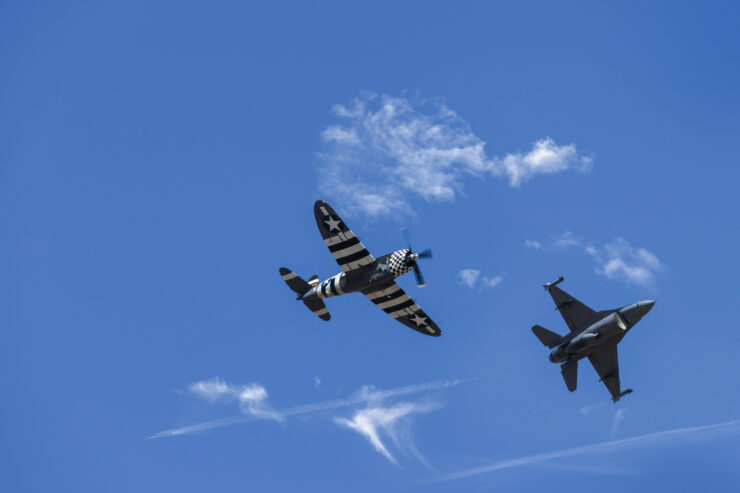




























































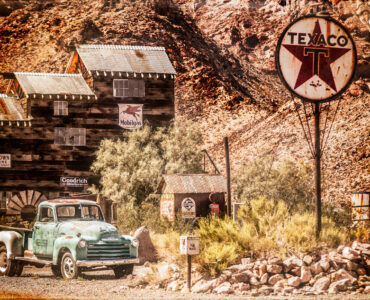
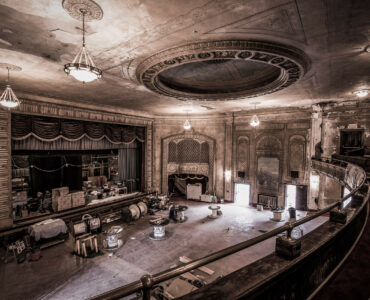
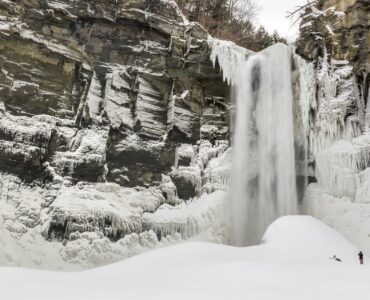
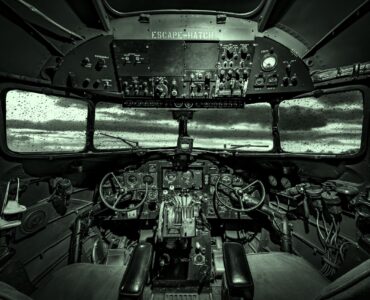





nice to see the inside, thanks.